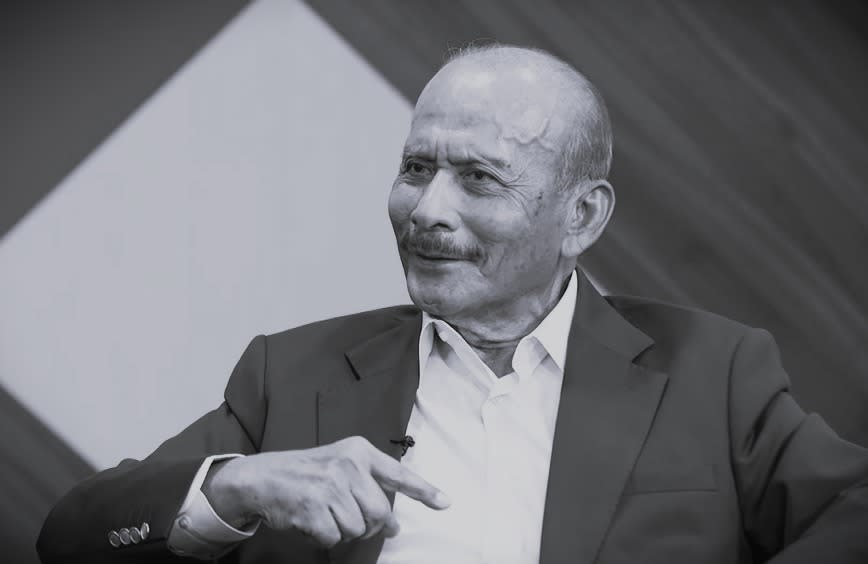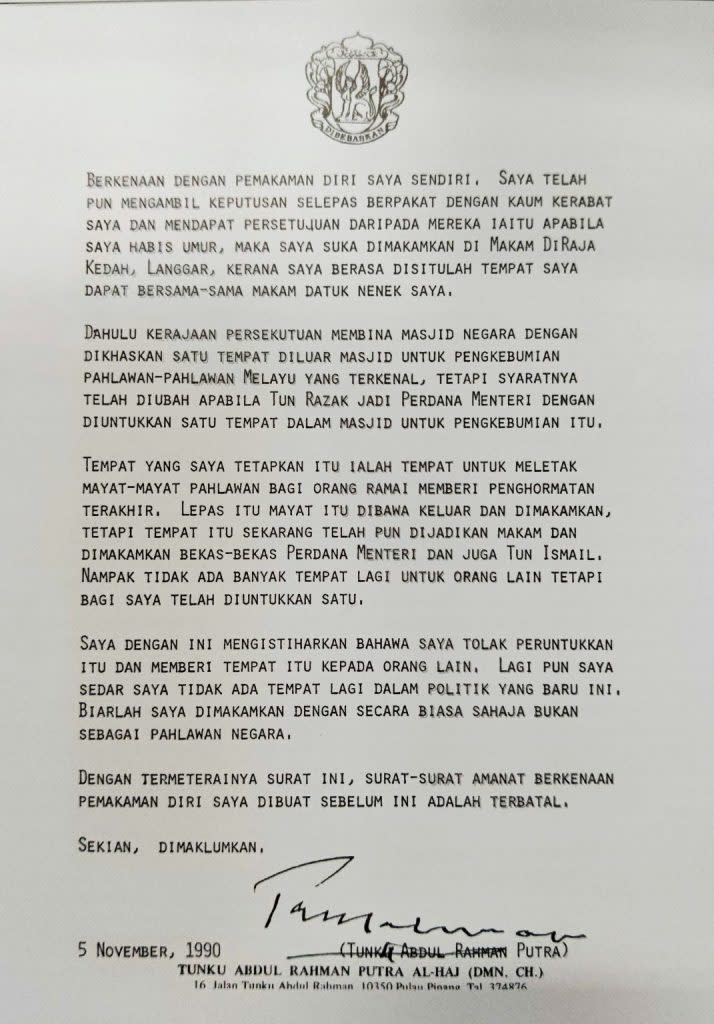Deliberate or poor communication? Ex-IGP Hanif Omar’s final resting place remains a talking point

Why wasn't Tun Mohammed Hanif Omar buried at the Heroes’ Mausoleum at the National Mosque in Kuala Lumpur? Was it deliberate or a sad case of miscommunication?
These are among the questions that have cropped up following the death of Malaysia’s longest-serving Inspector-General of Police (IGP) on April 20, 2024.
That same day, the current IGP, Tan Sri Razarudin Husain, who described Hanif as a “legend”, announced that his former boss – whom he had the privilege of serving for 10 years – would be buried at the Heroes’ Mausoleum. However, later that day, Hanif was buried at the Bukit Kiara Muslim Cemetery in Kuala Lumpur.
Confusion arose, with claims that Hanif’s final resting place had been changed at the last minute – from the Heroes’ Mausoleum to the Bukit Kiara Muslim Cemetery 13km away from the city centre – at the request of the family.
On Monday, Hanif’s son, Capt (Rtd) Abdul Rahmat Omar refuted these claims. Abdul Rahmat had listed the chronology of events leading to his father’s burial.
So what led to the change of the final resting place? Why hasn’t the government, or even Razarudin offered an explanation to put an end to the rumours that are widely circulating?
Who was responsible for this mistake? Did the decision-makers feel that Hanif was not worthy of a burial at the Heroes’ Mausoleum?
Hanif enjoyed an illustrious career in the force. Appointed IGP on June 8, 1974, at the age of 35, he was the nation’s top cop for 20 years until his retirement on Jan 15, 1994.
Prominent editor, and journalist Frankie D’Cruz, who witnessed Hanif’s dedication and commitment to his duty, described him as a man who holds a defining place in the pivotal moments in the evolution of the Royal Malaysia Police.
D’Cruz wrote in Free Malaysia Today that Hanif earned a reputation for tough policing, creating smart crime prevention programmes, and for establishing elite squads to tackle organised crime. He added that Hanif had excellent negotiating skills, and had a deep knowledge of counter-insurgency tactics and operations.
In 1973, then prime minister Tun Abdul Razak Hussein gave orders for Malaysia’s second deputy prime minister, Tun Dr Ismail Abdul Rahman, to be buried at the Heroes’ Mausoleum.
Many politicians of yesteryears, including their spouses, have been buried at the Heroes’ Mausoleum. They include Abdul Razak and his wife, Tun Rahah Mohamed Noah, and Malaysia’s third prime minister, Tun Hussein Onn and his wife, Tun Suhailah Mohamed Noah. Malaysia’s fifth deputy prime minister Tun Ghafar Baba was also laid to rest at the same place in 2006.
The cemetery, which was completed in 1965, is partially covered with a concrete dome. It must be noted that Dr Ismail, Abdul Razak, Hussein, and Ghafar, are the only four Malaysians that have been laid to rest inside the dome.
Other politicians and notable personalities buried at the Heroes’ Mausoleum include former Dewan Rakyat speaker and former Dewan Negara president Tan Sri Mohamed Noah Omar (1991), former home, and foreign minister Tun Ghazali Shafie (2010), former Dewan Negara president Tun Omar Ong Yoke Lin (2010), retired Army general and former Armed Forces chief Tun Ibrahim Ismail (2010), and former science, technology and innovation minister and former ambassador to the United States Tan Sri Jamaluddin Jarjis (2015).
However, the nation’s founding father – Tunku Abdul Rahman Putra Al-Haj – was not buried at the Heroes’ Mausoleum.
Despite being allocated a spot at the Heroes’ Mausoleum, Tunku Abdul Rahman, who died on Dec 6, 1990, was laid to rest at the Kedah Royal Mausoleum – at his own request. He made this clear via a Nov 5, 1990 letter that the Heroes’ Mausoleum, was no longer the final resting place for prominent Malay warriors, after Tun Razak became prime minister.

This begs the question as to the criteria that must be met before one is buried at this ‘sacred’ burial ground.
Perhaps it is time to create another Heroes’ Mausoleum, to honour other towering, non-political Malaysians who had dedicated their lives to their vocation and the nation, as mooted to this scribe by prominent editor and journalist, Datuk Ahirudin Attan.
The Bukit Kiara Muslim Cemetery maybe a good place, as it is the final resting place for numerous “legends”, including National Laureate Datuk Usman Awang, renowned Malaysian journalist Tan Sri Abdul Samad Ismail, Malaysia’s seventh Armed Forces chief General Tan Sri Mohd Ghazali Mohd Seth, and evergreen songstress Datuk Sharifah Aini Syed Jaafar.
This episode has also renewed calls for a Heroes’ Mausoleum for non-Muslims to be built. Another senior journalist, Datuk Zaini Hassan in his recent column in BebasNews, said that this would serve as a place to honour Malaysians of other faiths who had contributed extensively to this nation.
It should, however, be noted that both these suggestions were part of Malaysia’s national agenda 42 years ago. In June 1982, it was reported that a special burial place for those who had done this country a great service, would be set up in Damansara, Kuala Lumpur. The place would be known as Pusara Negara, covering 92ha and divided into sections for Muslims, Christians, Buddhists, and Hindus. The project was to have been completed in six years.
The entire plan was part of the world-class Taman Kiara Master Plan. However, in 1993, the establishment of the Kuala Lumpur Golf & Country Club on the land originally meant for Pusara Negara, signalled the full abandonment of the Taman Kiara Master Plan. Some two decades later, a Pusara Negara was built in Presint 20, Putrajaya - the administrative capital of Malaysia.
In an era where those in power find it befitting to celebrate mediocrity, and even reward non-performers, it must be painful for a grieving son to tell his mother, children, and grandchildren, why their family, and the country’s hero, was not given a fitting send-off, despite laying so great a sacrifice in defence of the nation and our freedoms.
Hopefully, there will be an explanation on this episode, and more thought be put into such a matter to ensure the nation's finest be given the farewell they deserve.
The post Deliberate or poor communication? Ex-IGP Hanif Omar’s final resting place remains a talking point appeared first on Twentytwo13.


